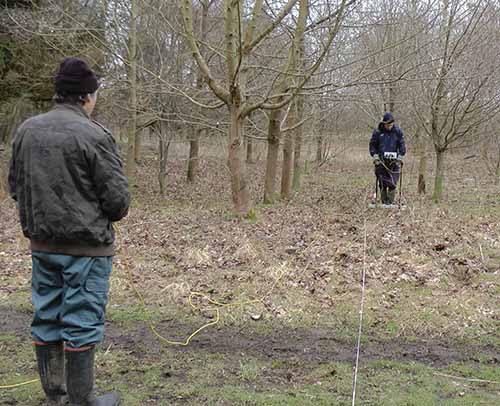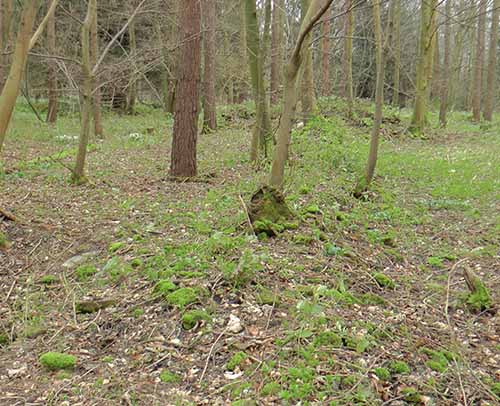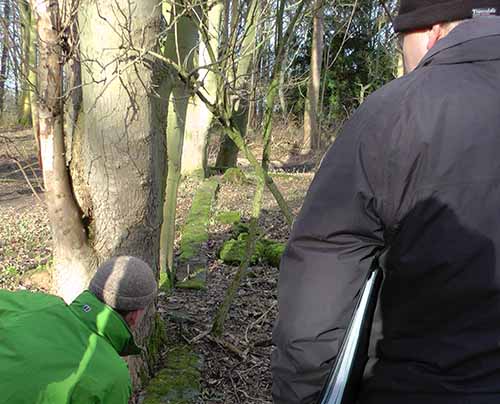The Cocken Hall Project Sunday, June 14th, 2015
|
|
|
|
|
We are pleased to announce that our next fieldwork will be taking place in the UK.
_
The Cocken Hall Project is an archaeological and research investigation being run by No-man’s-Land: the European Group for Great War Archaeology in partnership with Durham University’s Archives and Special Collections, the Durham County Record Office and the Northumbria Gardens Trust. It is supported by a generous grant of £10,000 from the Heritage Lottery Fund as well as support from local firms and organisations including Interserve, Turner and Townsend, Aldi, Framwellgate School and Framwellgate Scouts.
_
In 2011 one of NML’s members, Alastair Fraser, catalogued the papers of William Douglas Lowe, a classics lecturer at Durham University a catalogue of which is at https://www.dur.ac.uk/library/asc/collection_information/cldload/?collno=579. Lowe was a keen rower and also active in the Durham University Officers’ Training Corps in the years before the Great War.
_
On the outbreak of war Lowe joined the newly formed 18th Durham Light Infantry, the Durham Pals and was soon the Adjutant. The battalion was offered the use of Cocken Hall, a rather run down and unoccupied country house between Durham and Chester-le-Street. Initially the troops were accommodated in the house and its outbuildings but such was the pace of recruitment that the site quickly became overcrowded and contracts were let for the construction of huts. 18 DLI did their initial training on the site and moved to Cramlington in May 1915, then to Ripon in Yorkshire and later Fovant in Wiltshire. The whole of 31st Division were moved first to Egypt and then to France where one of 18 DLI’s companies was virtually wiped out on 1st July 1916. The battalion did another tour on the Somme over the winter of 1916/17 and fought at Arras. They spent the rest of the year in that sector and were fortunate enough to avoid the Third Battle of Ypres entirely. During the early days of the German offensive of March 1918 the commanding officer was wounded and Major W. D. Lowe came up to take command of the battalion. Losses were severe and the whole of 93rd Brigade was amalgamated into 93 Composite Battalion by the end of the month. The battalion did not become an independent formation again until 20th April. The division had moved to the Meteren area on the French/Belgian border and for much of the summer the battalion was involved in small scale actions attacking German outposts and defensive positions. It took part in the recapture of Ploegsteert Wood and ended the war with a crossing of the River Scheldt.
_
It was clear from the abundant material in the Lowe Collection that No-man’s-Land might be able to conduct an investigation similar to the “Plugstreet” Project, using archaeology and archive to throw light on how a British Pals Battalion trained and fought the Great War. Unusually much of the material related to training, much of it in the countryside around Cocken Hall. The Battalion is well documented and is the subject of two histories by W. D. Lowe and John Sheen and the Durham County Record Office has many memoirs and diaries of men who served in it. Additionally the Record Office has a superb set of photographs of the battalion under training at Cocken Hall, mostly taken by a press photographer from the Newcastle Evening Chronicle. Paradoxically Cocken Hall itself is not well known and excavation would be very useful to enhance understanding of the site.
_

Survey at Cocken Hall
_ In February 2014 No-Man’s-Land members under the direction of Peter Masters undertook a programme of geophysical survey on the field in which most of the huts were situated. Hut foundations and post pads showed fairly clearly as did a series of drains probably associated with latrines. The main north/south wing of the house was also located.
_

The Site of Cocken Hall.
_

Foundations of a building in the WW1 Training Camp at Cocken Hall
_
Two photographs of troops digging a rather chaotic trench suggested that there had been some sort of trench system. Comparison of the photographs with the landscape located this trench and subsequent geophysical survey in February 2015 revealed a quite substantial trench system possibly including dugouts or machine gun posts. This is a target for excavation.
_
A systematic search of local archives is the second part of the project and volunteers are being sought for this. A lot of interesting material has come to light already and we hope to have more. _
All places on the excavation team have now been allocated, but you can assist with our research via our website at http://www.plugstreet-archaeology.com/cocken-hall/
|
|
|
|
|
|
Filed under: The Cocken Hall Project by
admin
No Comments »
|
|